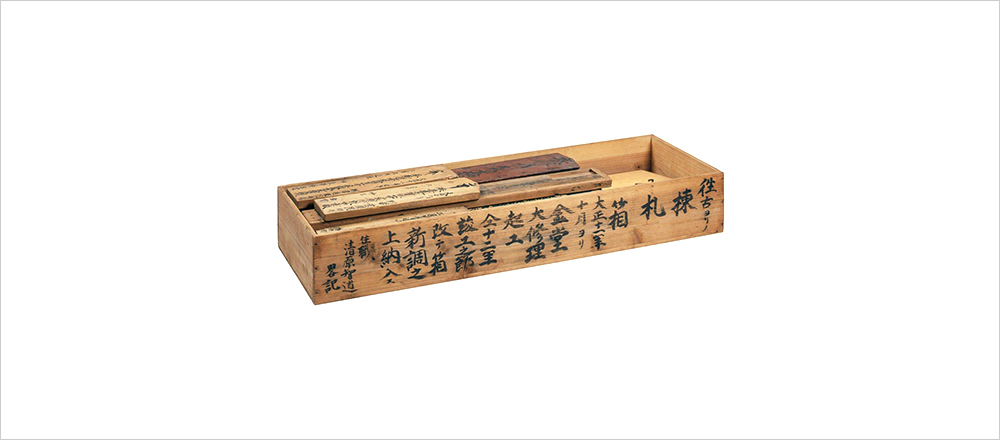Wooden munafuda of Jigen-in Temple
Carefully maintained over the course of many years at the Jigen-in Temple, affiliated with Hine Jinja Shrine, this historical artefact is a valuable tool for learning about the history of the shrine and temple.

Jigen-in Temple received its current official name from Ninnaji Temple in Kyoto in 1665. This venerable temple has a two-story pagoda and a main hall, and since early times, it has been officially affiliated with the Hine Jinja Shrine (Oiseki Daimyojin) in its neighborhood. A munafuda is a record of the construction and restoration of buildings, and it conveys a variety of information, such as the processes for repairs and the names of the craftworkers involved in them. A total of 20 munafuda remain, including the oldest one, dated 1530, indicating the replacement of roof tiles of a building of Hokkeji Temple and the newest one indicating the repair of the roofs of the two-story pagoda in 1951, as well as a munafuda dated 1602 indicating the construction of the inner shrine of Hine Jinja Shrine.






